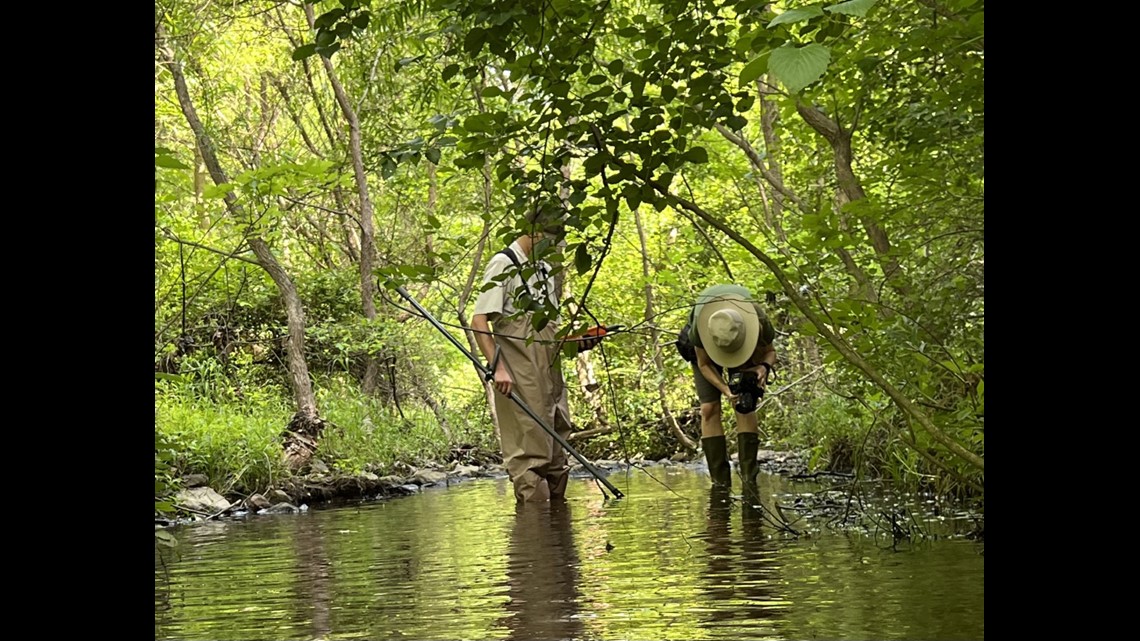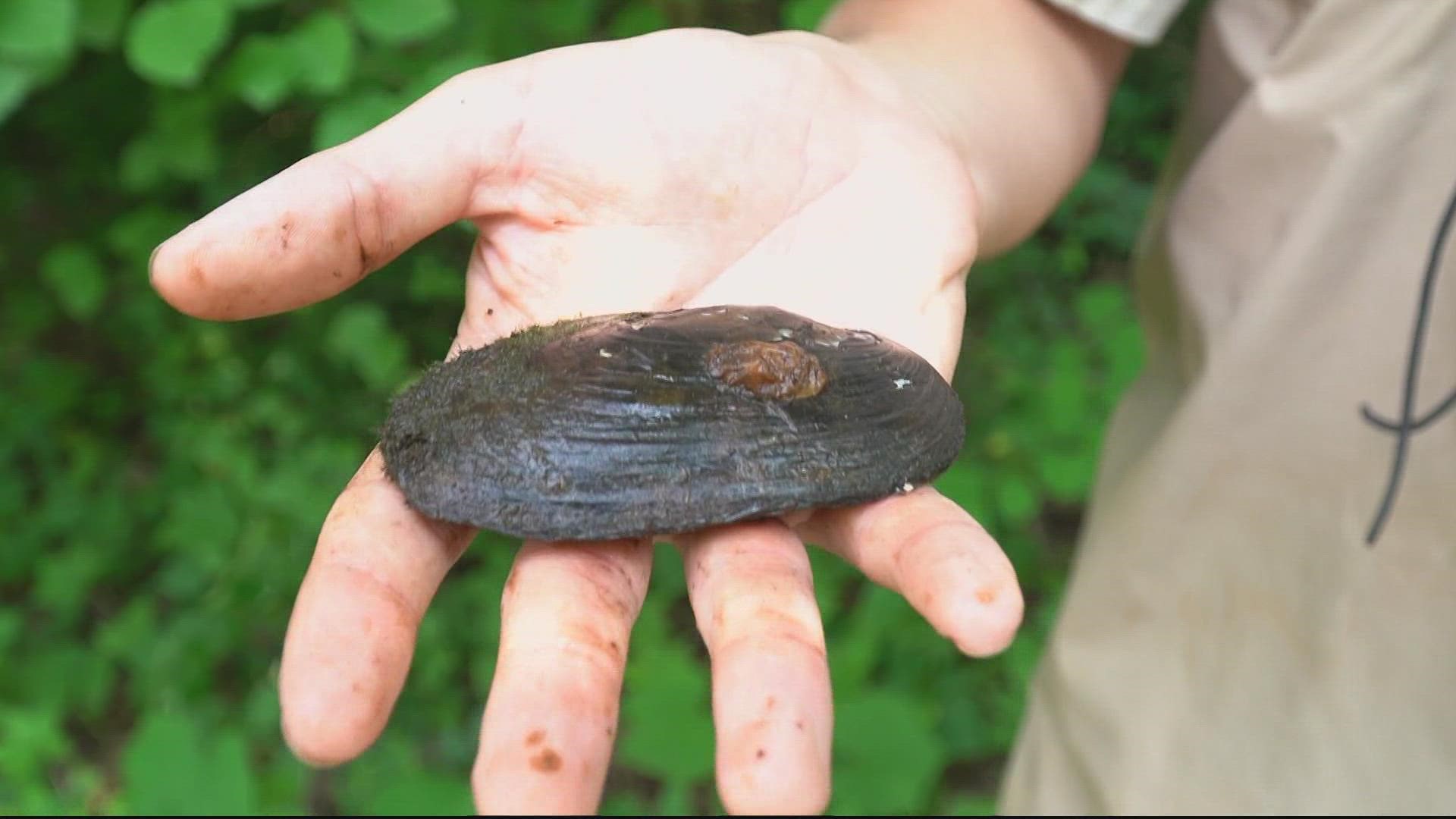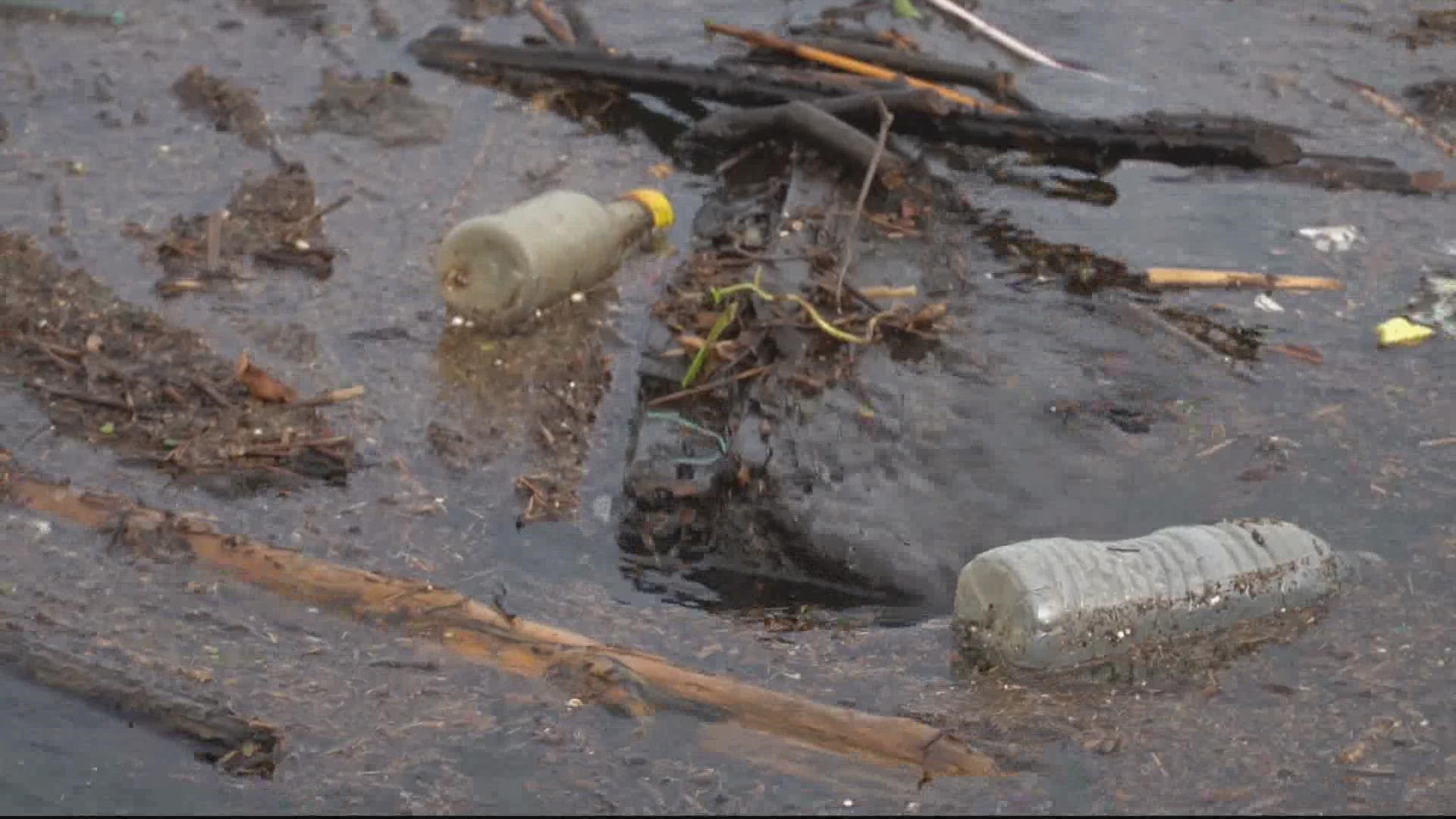WASHINGTON — Freshwater mussels may be out of sight, but they should not be out of mind.
A recent study shows we've lost over 90% of the freshwater mussel population in the Chesapeake Bay Watershed as a result of a number of human and environmental factors. Going back to the early 1900s, mussels were used to make buttons for shirts. Now, the remaining species are facing threats from dams restricting waterways, storm water runoff and pollution impacting water quality, just to name a few. But with the help of the Chesapeake Bay Foundation, the tiny but mighty mussels are putting up a fight to stay alive.
“Mussels are just a fundamental piece of what a Mid-Atlantic stream should look like," Joe Wood, a Senior Scientist with the Chesapeake Bay Foundation explained. "They live here, they create habitat, they’re good for water quality.”
A single mussel can filter up to 15 gallons of water in a single day and remove nitrogen that would otherwise contribute to algal blooms and poor water quality. So needless to say, their absence has been noticed.
“Freshwater mussels across Virginia and the country in many places are just gone or have been lost them for a variety of reasons whether waterways just aren't clean enough, or they've been cut off from fish populations that they need to reproduce,” Wood added.
But over the last 20 to 30 years, mussel biologists have developed new technology that allows them to breed and grow young muscles in hatcheries and later release them into the environment.
Each freshwater mussel has a unique ID tag secured to their shell. This way the U.S. Wildlife Service can easily locate them using a radio antenna to track their size and survival.


A group of mussels are being monitored at the Glade in Reston. A stream that was restored over 10 years ago.
“This is a site that once really probably wouldn't support mussel habitat," Wood explained. "It was degraded, highly erosive the stream banks had just been stripped out from high levels of impervious surface and flashing floods, and you know, rushing water”
Ben Rhoades is a Watershed Specialist with the Reston Association and oversees the progress of the Glade restoration. “The data has shown that since this restoration went in, the stream water quality has gone up. Once it would be unthinkable to even see a diversity of fish here, but now even mussels that those fish can support…it’s really exciting.”
And the muscles aren’t just surviving. They’re thriving.
“Eighty percent is a very good recapture rate for this stream," Jack Ryan who is a Fisheries Technician for the National Fish and Wildlife Foundation explained. "So we're essentially going to use this method for when we expand into the next phase of the project by stocking more mussels and of different species.”
There are currently around 50 mussels in this stream, but the plan is to eventually have 500 to 1,000.
“My hope is that projects like these can help us avoid what a catastrophe that would be for our natural heritage,” Wood added.
Projects like this are being done all across Virginia, Maryland and D.C.


